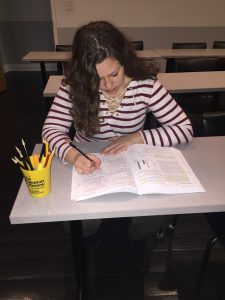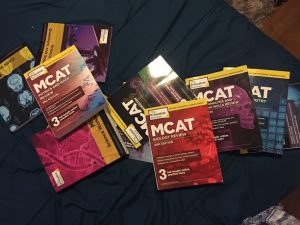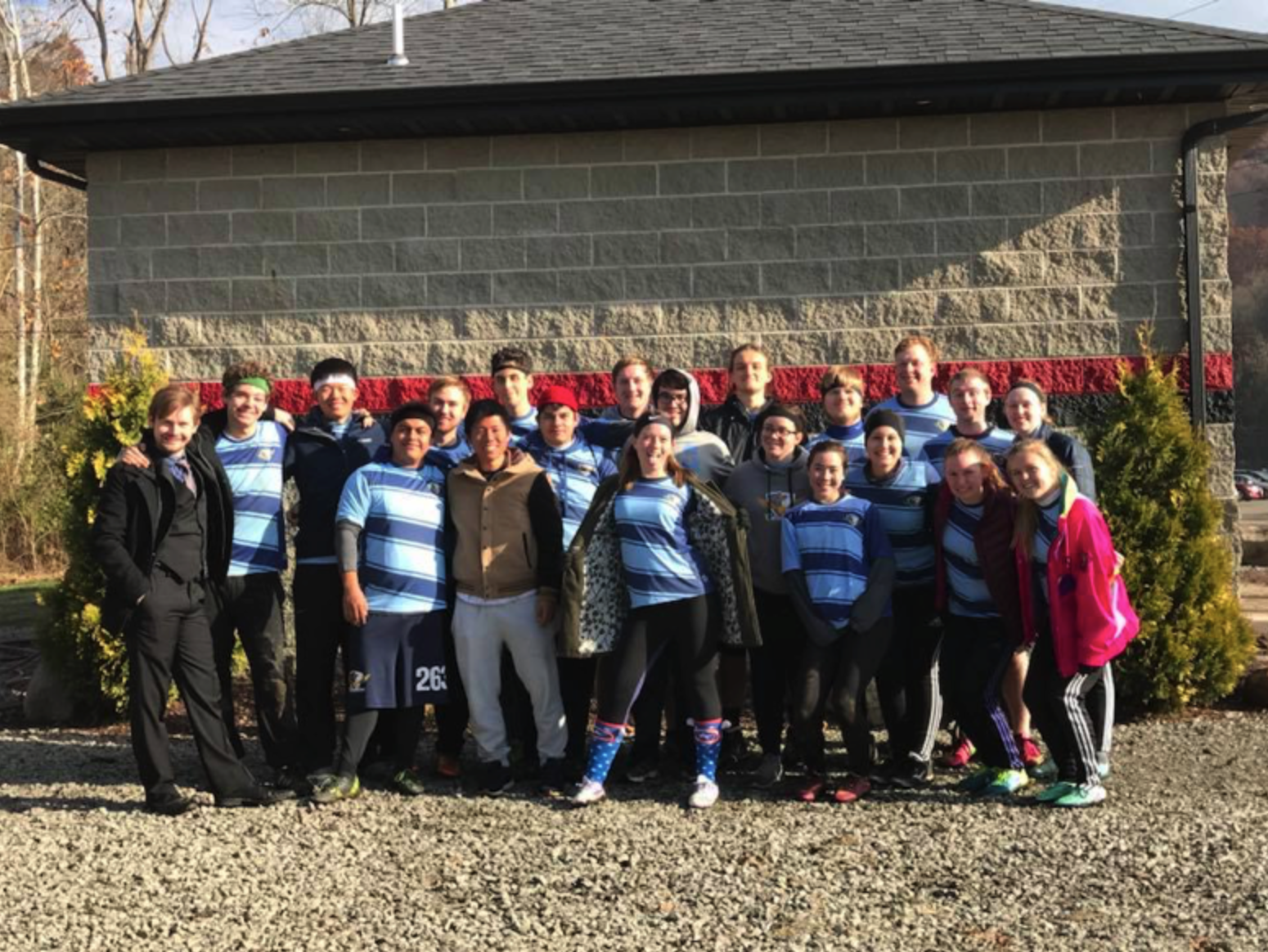By: Cailyn Derickson
At 3 a.m., Chapel Hill’s Homegrown Halloween festivities were dying down. The only two places open on Franklin were [B]Ski’s and Sup Dogs, and senior Rachael Scott and her friends were starving. They chose [B]Ski’s.
One of Scott’s friends had just broken up with her boyfriend, so the night was supposed to focus on girl time. Fate had a different idea.
The line was 40 minutes long, but Scott took one for the team. She waited in the line to get her exhausted friends, who snagged a corner booth, some food. A group of guys, dressed as Teenage Mutant Ninja Turtles, stood in front of her. The red turtle, Raphael, noticed Scott, who was dressed in a bright pink Britney Spears costume.
“The guy, 20 minutes into the conversation, asks, ‘Can I take you on a date?’” Scott said. “I looked at him, thinking, ‘I just met you 20 minutes ago. You’re dressed as a Ninja Turtle. How is this going to happen?’”
Scott gave him her phone number, expecting to never hear from him again.
But she did. Her mysterious Ninja Turtle texted Scott asking to read some articles she wrote for The Daily Tar Heel.
“I thought, ‘Wow, he actually wants to know, maybe, about my life,’” Scott said. “He maybe wants to know me.”
Corey James, who graduated from UNC in 2014, did want to get to know her. The two have been dating ever since they met in [B]Ski’s in 2015.
Stories like Scott’s aren’t all that common in the college dating scene.
From hang out to hookup
The hookup—a catch-all phrase describing casual romantic or sexual activities—has altered how students are meeting.
“Significant relationship events occur in a different order for college students now,” Tatum Jolink, a graduate student in psychology, said. “It often kicks off with hooking up.”
Jolink studies the development of close romantic relationships from initial attraction to long-term commitment. She said physical intimacy used to develop after a date, but now it’s what initiates relationships.
Although the process has changed, Jolink said students still prefer meeting their significant other through traditional means, like going to dinner or meeting in class.
“People have these ideas and these goals for how they’re going to meet their partner,” she said. “If they hook up with someone and that’s not really in line with how they imagined meeting someone, they think, ‘I’m not going to date them because we hooked up already.’”
Sophomore Breanna Welles said going on dates in college is nearly nonexistent.
Changing dating traditions
“I’m very traditional,” she said. “I wish it was more prevalent in today’s society. It’s better if someone asks in person or actually goes on a date, like dinner or coffee. Instead of this ‘let’s hang out’ type of thing.”
Senior Chandler Starr said he takes a more relaxed approach to dating. He doesn’t have a certain idea of how he should meet his significant other.
“As long as you both meet in a place or situation where you were comfortable, then you’re doing something right,” he said. “If you feel comfortable with that person, you should keep talking to them.”
Although students idolize this traditional dating process, senior Maggie Berra said it never happens—reflecting what Jolink has observed.
“You hook up first,” she said. “If that goes anywhere, you’ll text for a while. You’ll start hooking up regularly. You’ll hang out more. You’ll meet their friends. Then, you’re talking. Then, you’ll be an exclusive thing and then, you’ll date.”
The introduction of dating apps like Tinder, Bumble and Hinge have further altered the college dating scene.
“They have to learn what the norms are,” Jolink said. “Is Tinder more for hooking up or finding a relationship? What about Hinge? What about Bumble? Is one of them more respectful?”
These apps still don’t align with many students’ ideas of how they should meet their significant other.
“Technology has really altered dating,” Welles said. “[Men] will hide behind their phones by asking girls to go out with them. If she says no, the phone is a way to protect themselves from rejection.”
Berra said she had a success with Tinder. She matched with a friend on the app, who she had met before. The two began spending more time together, eventually dating for a semester.
Although Berra had a success on a dating app, she said her ideal situation still aligns more with a traditional scenario.
“I would love for someone to come up to me in the library and say like, ‘You look so nerdy cute studying.’ That would be awesome,” she said. “But that’s never going to happen because no one would ever do that in this day and age.”
In addition to desiring a traditional dating process, Jolink said students, in heterosexual relationships, opt to follow traditional gender roles—even though many claim they don’t need to.
Jolink said there is equal endorsement among men and women to initiate a date or define the relationship.
“However, it’s typically the men who do both,” she said. “Both genders are saying it could be either of them who progress the relationship along, but in reality, women aren’t active in those roles. It’s the men who are both proposing dates and defining the relationship.”
Sophomore Jose Espitia said he prefers asking women on dates, rather than women initiating them.
“There’s this certain feeling or connection to a person,” he said. “For me personally, I will know if I want to date a girl within a couple of moments of interacting with her. You just have this feeling of wanting to spend time with a person and if I don’t have that feeling, then I don’t want to date. If she asks me to dinner or to hang out, and I don’t feel that initial connection, then I’m more inclined to say no.”
“Matching” doesn’t always guarantee a good match
Rooted in the prevalent desire for a traditional dating experience, Scott said students come to college expecting to find their match. She said she had this expectation too, and though it worked out for her and James, she recognizes it doesn’t for most.
“Coming from high school, you feel like all of your market is saturated,” she said. “You’ve met the people. You’ve probably gone to school with them your whole life and you just want to meet people you’ve never met before. You think ‘there’s got to be someone for me.’”
Espitia said the larger array of people in college encourages students to date multiple people.
“There’s more opportunity here, so you don’t settle,” he said. “You have an image of a girl you want and you’re like ‘I’m bound to find her because there’s a lot of people here.’”
Juniors Marigny Strauss and Trent Martensen faced a similar challenge. The two began dating their first year at UNC. Although they spent a majority of their time together, Strauss wasn’t sure she wanted to be in a relationship.
“I thought that for the long run we should take the first semester and not date because we had just come to college,” she said. “I felt the need to have a good college experience.”
Martensen felt differently. He said he pursued Strauss for three months. He wanted to take the traditional approach by beginning their relationship as friends.
“I didn’t have money to go on really expensive dates,” he said. “We would go to the gym and shoot hoops during breaks because she couldn’t go home, so I would stay here too. There would be no one else on campus, which was nice. I remember spending hours passing the football in my room and just talking.”
Strauss said it’s challenging to date in college, but it’s worth it.
“It’s hard when you feel like everyone else is going out, flirting with people and having fun being single,” she said. “But I think a lot of people are looking for their person and they’re going out to hook up, so it’s nice knowing I don’t really have to do that because I already have my person.”
Scott said [B]Ski’s will always have a significance to her. Her boyfriend got her a necklace last year for her birthday before she went abroad. It was a plaque necklace with what he said were the coordinates of Chapel Hill engraved on it.
“When I got back, he later told me it was the coordinates of [B]Ski’s.”
Edited by Jack Smith


